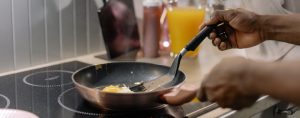The team at Salt Lake City’s Architectural Nexus are now building what we hope will be the first ever Living Building in the Wasatch Front! A Living Building is just what it sounds like – a building that gives more than it takes, creating a positive impact on the human and natural systems that interact with them.
Achieving Living Building standards requires innovative practices in design, water, energy, materials, equity, health, happiness, and beauty. A successful project includes:
- Regenerative spaces that connect occupants to light, air, food, nature, and community.
- A building that is self-sufficient by producing more energy than it uses and collecting and treating all water on site.
- A commitment to a healthy and beautiful.
Let’s take a moment to look at one aspect of the Arch Nexus SLC: WATER
Water and Living Buildings
Scarcity of potable water is quickly becoming a serious issue as many countries around the world face severe shortages and compromised water quality. Architectural Nexus’ Living Building’s aims to respect water as a precious resource.
Rethinking Water Use
In the US, the three largest uses of water in office buildings include restrooms, heating and cooling, and landscape watering. Indeed, water can be used and purified and then used again—and the cycle repeats. Currently, such practices are often illegal or highly limited due to health, land use and building code regulations.
Utah’s water collection regulations are among the most stringent in the nation. Sites like Arch Nexus SLC may only capture and store a maximum of 2,500 gallons of water for use.
Net Positive Water Solution
Within the limits of these regulations, Architectural Nexus has ambitious water conservation goals. Rainwater collection and gray water recycling will be implemented, specifically:
- 2,250 gallons of outdoor storage for urban agriculture;
- 250 gallons indoor/freeze-protected storage for clothes washing associated with their fitness center and locker/shower rooms;
- 180 gallons of treated grey water storage for ultra-low-flow toilet and urinal flushing as well as indoor irrigation for the living walls that punctuate the open office areas.






